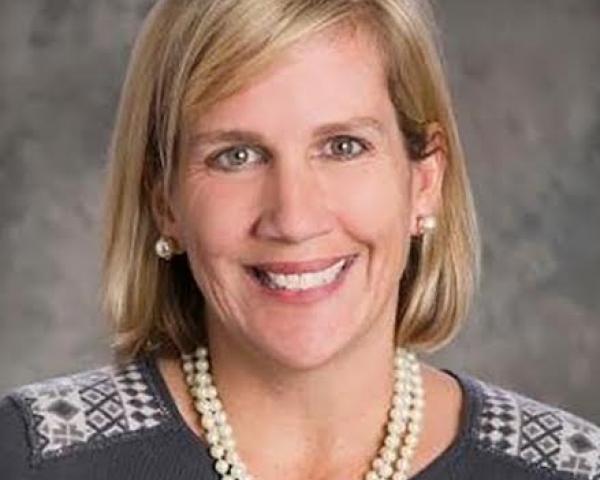We have to talk about the “B” word. No one wants to go there. But as COVID-19 continues to wreak havoc throughout the world, we are seeing more companies headed toward bankruptcy. Although the stock market continues to soar, the underlying U.S. economy is sputtering. Bill collectors are still open for business, and certain companies, especially those that were in precarious financial positions before the pandemic (think certain retail chains and energy companies hit with the double-whammy of the virus and the oil crisis), are suffering.
Bankruptcy presents a host of problems for directors and officers. Although litigation against the company is stayed during the bankruptcy process, suits against individuals are typically not. As company indemnification dries up, D&O insurance is the last line of defense for executives. So, it is important to understand how that insurance may/may not respond to protect directors and officers.
How are D&O Insurance Programs Typically Structured?
Public companies typically purchase traditional D&O insurance coupled with additional dedicated Side A limits of liability.
A quick refresher…traditional D&O insurance has three main insuring agreements. Side A is coverage for directors and officers personally in the event claims are made against them and the company cannot legally or financially provide indemnification. Side B is coverage that protects the company to the extent it indemnifies directors and officers for claims made against them. Side C is coverage for the company when it is named in a securities claim.
The dedicated Side A limits that “sit on top” of a traditional D&O tower of insurance are typically written on a “Difference in Conditions (DIC)” basis. If the underlying traditional D&O insurance does not respond to an A side claim, to the extent covered by the DIC insurance such insurance will “drop down” and begin to pay on behalf of directors and officers.
It is important to review the terms and conditions of your D&O policies to ensure they will respond properly in the event of bankruptcy.
Traditional D&O Insurance Considerations in Bankruptcy
There are a number of provisions within a traditional D&O policy that can have a material impact on the way a policy does or does not respond in the bankruptcy context.
The first such provision is the change-in-control clause in the policy. This provision details the instances in which the policy will automatically convert into a tail period; meaning that, from the date of the change of control until the end of the policy period, the insurer will only cover claims for wrongful acts that occurred prior to the change in control date. The most common change in control trigger is the sale of the company to another company. In some D&O policies, however, bankruptcy triggers a change in control. Most companies will want this trigger deleted from their policy as they will want coverage to continue, uninterrupted, throughout the bankruptcy process. Companies typically purchase a multi-year tail program to trigger at the end of the bankruptcy process.
As traditional D&O insurance covers multiple constituencies (e.g., natural persons and corporate entities), how are policy proceeds accessed during bankruptcy? If there are no claims outstanding and no claims are made during the bankruptcy proceeding, this question does not need to be answered. The D&O insurance goes unused. If, however, there are claims against the company and individual insureds that have triggered (pre-bankruptcy) or do trigger (during bankruptcy) the insurance policies, the policy and its proceeds may become an asset of the debtor’s (the company’s) estate. As such, directors and officers may need to petition the bankruptcy court for access to such insurance proceeds to pay their defense costs. Additionally, the insurer may request a comfort order from the court.
It is very important that the D&O policy have a carefully thought out “Order of Payments” provision. This provision is an indication to the court considering the petition (and to all insureds) that:
- the intent of the policy is to first and foremost protect individual directors and officers; and
- particularly in the event of a bankruptcy, A side claims should be given priority and paid first.
Next, we turn to exclusions within the policy. In this time of market upheaval (both in the broader financial markets as well as in the D&O insurance market), insurers have been attempting to add insolvency-related exclusions to D&O policies. Although there are arguments that can (and will!) be made under the bankruptcy code that these exclusions are unenforceable ipso facto clauses, these exclusions are very dangerous and should not be added to policies if there is any way to avoid them.
Additionally, it is important to review the entity (or insured) versus insured exclusion. This exclusion is designed to prevent collusive behavior between insureds. In other words, the company cannot sue an executive and expect insurance to pay unless that suit is brought in specific situations. As creditors’ committees are common plaintiffs in bankruptcy actions and are often acting “on behalf of the companies,” it is imperative to have a full bankruptcy-related exception to the entity versus insured exclusion.
See also: COVID and the Need for Devil’s Advocates
In all instances, the retention (deductible) applicable to an A side claim should be nil, and the policy should respond first dollar. To ensure that defense costs are quickly advanced to individuals ensnared in litigation, the policy should have clear wording that, in the event the company fails or refuses to indemnify for any reason (including financial insolvency), the insurer will advance such amounts to the insured individuals, dollar one.
Finally, the policy should include bankruptcy waiver language. This language is a contractual promise that both the insurers and the insureds agree to waive and release (and agree not to oppose or object to) any request for relief from any automatic stay or injunction as to the policy proceeds.
Side A DIC D&O Insurance Considerations in Bankruptcy
As with the traditional D&O program, it is important to review the Side A DIC bankruptcy-related terms and conditions.
The insuring clause will indicate if and when the Side A DIC insurance will come into play in a claim. This insurance is similar to any excess insurance in that it will respond to A side claims if the underlying limits of liability are exhausted. The DIC feature provides that, even if the underlying insurance is not exhausted, the Side A DIC insurance can drop down and begin paying A side claims if the underlying insurance fails to do so. Most Side A DIC policies enumerate the instances in which it will drop down. From a bankruptcy perspective, the key trigger is that the policy will drop down in the event any underlying traditional insurer fails to pay because the bankruptcy court has imposed a stay order upon the policy proceeds.
In line with the recommendations made with respect to the traditional D&O policy form, the following should be considered:
- Some insuring clauses include “any source” language. This language indicates that the policy will not trigger if the individual is entitled to indemnification from “any source.” This language is less favorable than language that allows the policy to trigger as soon as the individual is not indemnified by the company itself.
- Although we cannot recall a Side A DIC policy that has a bankruptcy change-in-control trigger, stranger things have happened, so double check your policy.
- On the most difficult risks, we can imagine even Side A DIC insurers introducing bankruptcy exclusions as part of the underwriting process. For companies that are teetering, if this exclusion is ultimately enforceable, it defeats the purpose of the purchase. To avoid coverage disputes over the exclusion, every alternative to the exclusion must be considered.
- Some A Side DIC policies have an “order of payments” provision that is unique to debtor-in-possession scenarios. The provision simply states that claims for wrongful acts occurring prior to the company becoming a debtor in possession have priority over claims for wrongful acts occurring after such event.
- Strong bankruptcy waiver provisions should be included.
- If the lead Side A DIC policy is followed by excess policies, each one should contain a DIC through DIC endorsement. This endorsement requires excess DIC insurers to drop down and fill any gaps that may be left if an underlying DIC insurer fails or refuses to pay loss.
Final Thoughts
One of the largest concerns we have seen from insureds is limits adequacy/management. It is important to remember that the D&O limits you purchase could, if the bottom falls out, be the limits you have available to you in bankruptcy for any and all claims associated with the bankruptcy. We have witnessed unfortunate examples of companies that had NO expectation that bankruptcy was even a blip on the horizon one year ago and that now find themselves in the midst of it and unable to secure additional D&O limits. As most of us have learned in one way or another from COVID; “NEVER SAY NEVER – ANYTHING IS POSSIBLE.”
We have seen claims in which defense costs get out of hand and limits are eroded to the point where there is little if any money left for settlement. This can obviously occur if the limits of liability purchased are too low. It also happens in conflict of interest (whether actual or potential) situations where insured individuals want separate counsel.
See also: State of Commercial Insurance Market
With respect to conflicts, do the directors and officers agree that they should be entitled to separate counsel only in the event of an actual conflict of interest, or do they require language in the D&O policy (and discussion with the insurers) that any potential conflict of interest warrants separate counsel. As noted above, limits go quickly, and expectations should be set up-front. Remember, in a bankruptcy situation, the D&O insurance is the last line of defense for the individuals.
Finally, and from a practical standpoint, and not unique to bankruptcy scenarios, it is important to make sure that, if an insured requires panel counsel to be used, the company and its directors and officers are comfortable with the panel list before a claim comes in.
The time to prepare for these issues is now.






